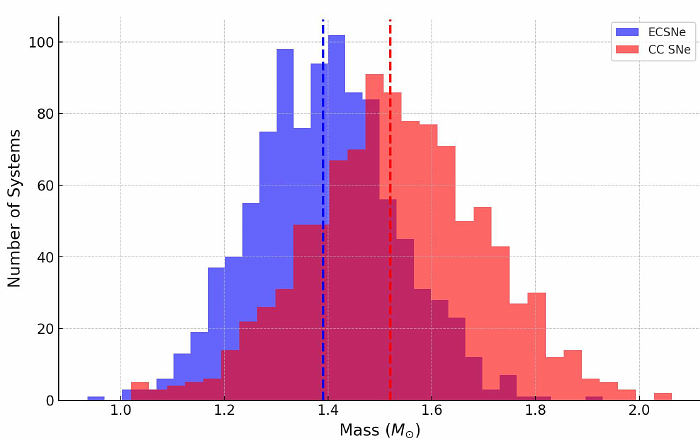Exploring the Formation Mechanisms of Double Neutron Star Systems: An Analytical Perspective

Exploring the Formation Mechanisms of Double Neutron Star Systems: An Analytical Perspective
Ali Taani, Mohammed Abu-Saleem, Mohammad Mardini, Hussam Aljboor, Mohammad Tayem
AbstractDouble Neutron Stars (DNSs) are unique probes to study various aspects of modern astrophysics. Recent discoveries have confirmed direct connections between DNSs and supernova explosions. This provides valuable information about the evolutionary history of these systems, especially regarding whether the second-born Neutron Star (NS) originated from either a Core-Collapse ($CC$) or Electron-Capture Supernovae ($ECSNe$) event. The provided scale diagram illustrates the distribution of different types of DNSs on the basis of their orbital parameters and other factors, including mass loss. As a result, the physical processes in DNSs vary depending on the formation mechanisms of the second-born NS and characteristics of the systems. $ECSNe$ processes are typically associated with merging systems ($e\times{P_{orb}}< 0.05$), while $CC$ processes are more commonly linked to non-merging systems ($e\times{P_{orb}}> 0.05$). Our results suggest a critical mass threshold of 1.30$M_\odot \pm 0.22M_\odot$ (critical value) for the $ECSNe$ process to form an NS, while $CC$ processes might occur at higher masses. Examining the orbital parameters of DNSs in a known gravitational potential can enhance our understanding of the theoretical predictions for DNS progenitor characteristics. It turns out that the $ECSNe$ process predominantly produces DNS systems with short orbital ($P_{orb} \leq 0.25 d$), nearly circular orbits ($e\simeq 0.2$), accompanied by minimal kick velocities imparted on the proto-NS and significant mass loss. In contrast, their orbital dynamics in a known gravitational potential plays a crucial role in enhancing our understanding of the SNe geometry and the formation and evolution processes among different NS samples.